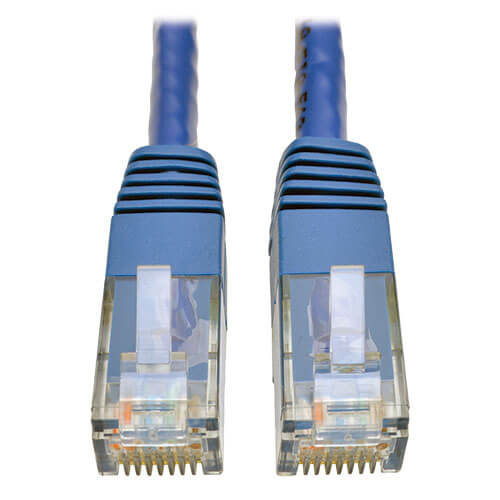What Is the Difference Between CAT5e and CAT6 Ethernet Cables?
When using Ethernet Cables, we hear the word CAT5e Cable and CAT6 Cable, so what exactly is the real difference? Both of these cables are called twisted pair copper cable, both have 8 individual insulated copper wires and both are normally terminated with the RJ-45 connector. What is the big deal?
The initial Ethernet data standards used copper coaxial cable to transfer data around the early packet switched networks.
10Base5
10Base5 networks used fairly stiff 0.375 inch, 50 ohm impedance coaxial cable, and was often characterised by its Creamy Yellow external insulated coating. It had been often linked to the wall much like a Dado Rail and was often known as Thick Ethernet. It turned out meant to pass Ethernet signals at 10 Mbps on the maximum distance of 500 metres, and this might be extended as much as 2500 metres using 4 repeaters.
10Base2
10Base2 networks utilised 50 ohm impedance coaxial cable that’s much thinner and more flexible than 10Base5, nevertheless the Ethernet signals remained as designed to be transmitted over this medium at 10 Mbps, albeit over the much shorter distance of approximately 185 metres, which may be extended as much as 925 metres by building 4 repeaters. Both the 10Base5 and 10Base2 standards are getting to be largely obsolete and twisted pair cable is the normal wired network medium.
Twisted Pair Ethernet Cable

10BaseT was developed in early 1980s and it mainly used Category 3 cable for transmissions approximately 10 Mbs over distances as much as 100 metres. Ethernet standards evolved to include faster data rate transmission and the 10BaseTx 100 Mbps and 1000Baset 1000 Mbps standards were introduced. Cat3 cable was not longer had sufficient bandwidth a reaction to cope with these faster technologies and so the Cat5 and Cat5e cable standards were introduced which allowed data speeds at as much as 100 Mbps and 1000 Mbps respectively. The first Cat5 standard was fine for the 100BaseTx transmissions but was quickly superseded by Cat5e as the 1000BaseT standard became commonplace.
So what exactly is the difference between CAT5e and CAT6 Cable? Well the cables are constructed in the likewise manner with 4 copper pairs, making 8 wires in whole. Each set of two wires are colour coded and twisted around one another in lowering Crosstalk. The Cat5e cable is rated up to 100Mhz and supports around 1 Gigabit Ethernet, even though the Cat6 cable is rated as much as 250Mhz which enable it to support 10 Gigabit Ethernet signals.
Cat6 Ethernet Cable has over 2 twists per centimetre whereas Cat5e Ethernet Cable only has 1.5 to two twists per centimetre. This means that Cat6 Cable better protects against Crosstalk. Another difference is the sheath thickness is additionally greater when you compare Cat6 with Cat5e. A few of the Category 6 cables actually have a Nylon Spine as well as the combination of this spine and the thicker sheath protect against Near End Crosstalk (NEXT) and Alien Crosstalk (AXT), that may increase because the frequency increases.
Most Ethernet Cables used are UTP (Unshielded Twisted Pair), because they would be the cables recommended for use relating to the peripheral devices for example computers along with the wall socket. STP (Shielded Twisted Pair) Cables are suggested to be utilized for outdoor installations and also for cable runs inside internal walls.
Stranded cables will be more flexible and therefore are more frequently useful for computer to wall socket and for general home network use, but often businesses usually like the solid cables with regards to the wiring inside walls and wiring ducts due to the superior strength that has been enhanced network performance.
In summary, Category 5 enhanced cables are sufficient for most applications for boosts to at least one Gigabit per second, but if you anticipate using 10 Gbps Ethernet later on then Category 6 cable will future proof your investment. Also Category 6 cable, even on the 1 Gbps speeds gives enhanced protection against errors.
For additional information about cat5 vs cat6 vs cat7 please visit webpage: look at here.

Leave a Reply
You must be logged in to post a comment.